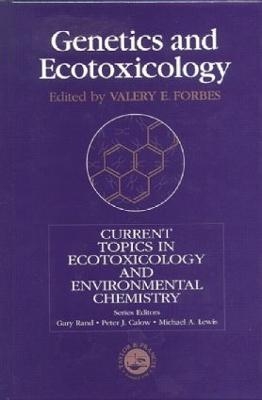
Genetics And Ecotoxicology
Crc Press Inc (Verlag)
978-1-56032-715-8 (ISBN)
In broadening the understanding of ecological response, this resource ranges from molecular to classical genetics, from plant to animal, from asexual to sexual, touching on some fundamental issues of evolutionary biology. In addition, gaps in our present understanding of genetic and ecotoxicological processes and future research directions have been identified.
Valery E. Forbes is at Roskilde University in Denmark
1. Genetics and Ecotoxicology - Insights from the Interface Valery Forbes 2. The Evolution of Heavy Metal Tolerance in Plants: Adpatations, Limits, and Costs A. Johnathan Forbes 3. Mercury Tolerance, Population Effects, and Population Genetics in the Mummichog, Fundulus heteroclitus Judith Weis, Nicolay Mugue, Peddrick Weis 4. Chemical-Induced Changes in the Genetic Structure of Populations - Effects on Allozymes Robert Gillespie and Sheldon Guttman 5. Adaptation to Metals in the Midge, Chironomus riparius - a Case Study in the River Dommel Jaap Postma and Dick Groenendijk 6. The Influence of Contamination Complexity on Adaptation to Environmental Contaminants Paul Klerks 7. Natural Selection in Contaminated Environments - a Case Study Using RAPD Genotypes Christopher Theodrakis and Lee Shugart 8. Structural Damage to DNA in Response to Toxicant Exposure Lee Shugart 9. Toxicity and Sexual Reproduction In Rotifers: Reduced Resting Egg Production and Heterozygosity Loss Terry Snell, Manuel Serra and Maria Jose Carmona 10. The Influence of Reproductive Mode and its Genetic Consequences on the Responses of Populations to Toxicants - a Case Study Valery Forbes, Vibeke Moller, Robert Browne and Michael Depledge 11. Genetic Variation in the Response of Daphnia to Toxic Substances: Implication for Risk Assessment Donald Baird and Carlos Barata Barata, University of Stirling, UK, Robert Browne, Wake Forest University, USA, Maria Jose Carmona, University of Valencia, Spain, Michael Depledge, University of Plymouth, Valery Forbes, Roskilde University, Denmark, Robert Gillespie, Indiana University-Purdue University, USA, Dick Groenendijk, University of Amsterdam, The Netherlands, Sheldon Guttman, Miami University, USA, Paul Klerks, University of Southern Louisiana, USA, Nicolay Mugue, Institute for Developmental Biology, Russia, Vibeke Moller, Danish Environmental Protection Agency, Denmark, Jaap Folkert Postma, Aquasense Consultants, The Netherlands, Lee Shugart, LR Shugart and Associates Inc., USA, Manuel Serra, University of Valencia, Spain, A. Johnathan Shaw, Duke University, USA, Terry Snell, Georgia Institute of Technology, USA, Christopher Theodrakis, Texas A & M University, USA, Judith Weis, Rutgers University, USA, Peddrick Weis, New Jersey Medical School, USA.
| Erscheint lt. Verlag | 21.12.1998 |
|---|---|
| Verlagsort | Bosa Roca |
| Sprache | englisch |
| Maße | 156 x 232 mm |
| Gewicht | 526 g |
| Themenwelt | Studium ► 2. Studienabschnitt (Klinik) ► Pharmakologie / Toxikologie |
| Naturwissenschaften ► Biologie ► Biochemie | |
| Naturwissenschaften ► Biologie ► Genetik / Molekularbiologie | |
| ISBN-10 | 1-56032-715-4 / 1560327154 |
| ISBN-13 | 978-1-56032-715-8 / 9781560327158 |
| Zustand | Neuware |
| Haben Sie eine Frage zum Produkt? |
aus dem Bereich


